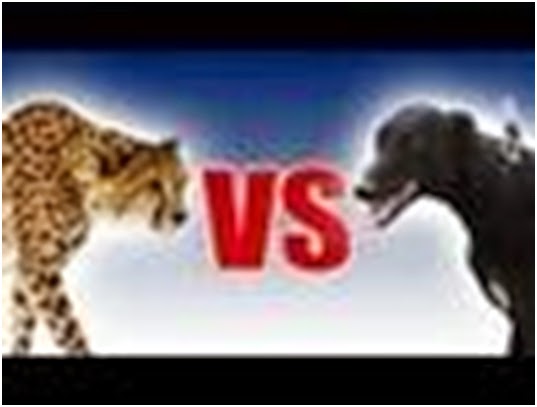How to Run Faster
There are only two ways to increase
running speed, increase your turnover speed per minute or increase your stride
length. To run the fastest you must do both, without stride length interfering
with cadence, or cadence interfering with stride length. Speed is a beautiful balance
between the two. In this second article about running faster we will look at
the importance of faster turnover or cadence.
Last week we had a fun look at the
fastest animal on two legs, the Ostrich and how its running and structure
compare to a humans gait. There was a
lot to learn from the Ostrich. This week we will look at the running of two
fast four legged animals. There is a surprising amount we two leggeds can learn
from the way four leggeds run. It turns
out that the difference in speed between a greyhound and a cheetah is in part
due to the ability of the cheetah to increase its turnover or cadence while the
greyhound does not do this as well.
Cadence is an essential part of running
faster. Here are some more things we can learn from these two animals
1.
Just as in humans
the power for running comes from the pelvis.
2.
The ability to
use the hips, pelvis and spine with skill is essential to good running.
3.
Cadence and
stride length are both important. When these two ingredients are perfectly
balanced we might called this balanced quality fluidity.
4.
Notice that these
animals are masters of coordinating and using their “core”. The concept of
holding a tight or rigid core, or just keeping the core “engaged “ is not seen
at all in their running. It is a whole body well coordinated use of themselves
that we see.
5.
There is a float
phase in the running of these animals in which they are flying through the air.
Humans have this float phase in their running too.
6.
The rear legs
come far forward to facilitate the timing of this float phase, but then act
powerfully under the animal’s center of gravity.
7.
Animals tend to
run well with instinctive good self usage or form and when they are tired they
stop.
8.
Now we come to
something very important: The running of both of these animals has a
quality of beauty to it. They are
beautiful when they run. This is a running tip that you might not have
heard often. Your best running has a quality of beauty to it. This is something
that can be cultivated.
9.
Four legged
animals have a horizontal central axis. Humans have a vertical central axis.
That does not mean that humans should run exactly vertically with the ground.
Lean the whole postural column forward slightly. But learn to use your vertical
axis well. Figure skaters use the vertical axis to spin, bull fighters use it
to turn quickly out of harm’s way, runners use it to “spiral “ forward. Watch the easy spiraling action in the spine
of the runner below.
Here is a human example of no wasted effort, long
spiraling spine, great opening of the stride, very high cadence, and great fluidity,
ease and speed.
https://www.youtube.com/watch?feature=player_embedded&v=sZHeply7SE8
Cultivate a sense of beauty. If you find yourself
pressing to increase your stride length in your training or a race, back off
the slightest bit until you no longer hinder your cadence, your beauty, your
ease, your fluidity. The number one enemy of high cadence is excessive muscular
tension, straining, “trying”. Maintain a
long relaxed spine that moves and spirals easily through the running movement.
Find what is true ease for you.
I hope you had fun with this in a series of posts
about increasing your speed. I am here to help. If you want to learn more about
taking your running farther click here.
Thanks and best to you till next time - Scott


